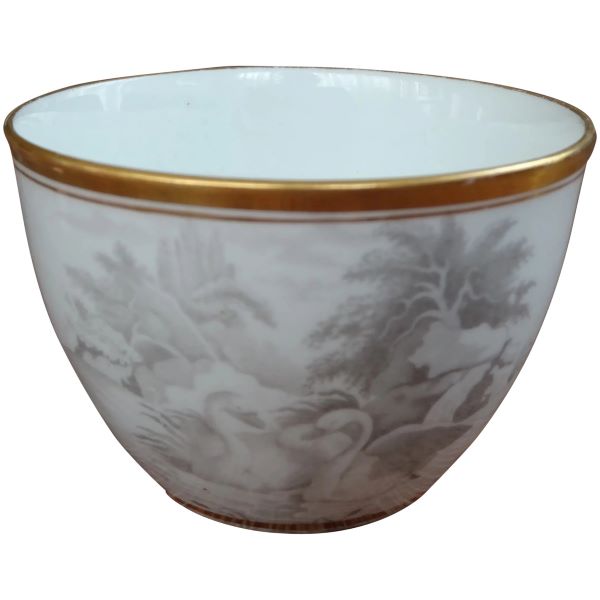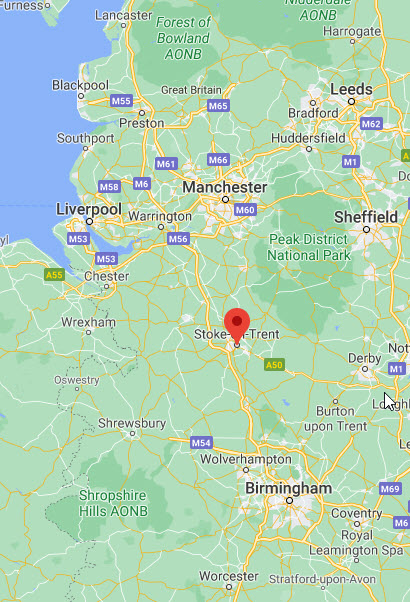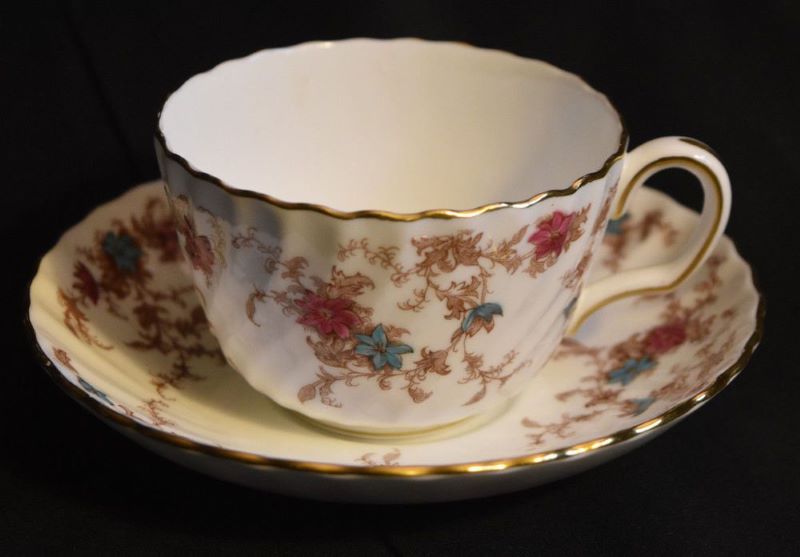Thomas Frye set up a pottery factory outside London in 1748. Frye located his factory close to the London stockyards and availed himself of plentiful cattle bones from slaughtered animals. Frye threw the bones into his ovens to reduce the bones into ash, and then included a substantial portion of that bone ash (45%) in his clay body recipe. This clay body made with bone ash came to be called “bone china”. Because such a large amount was produced in England for an extended period of time, we now refer to this type of pottery as “English bone china”.
In the 1780s Josiah Spode modified Frye’s formula and set up a large-scale bone china factory near Stoke-on-Trent, England.
Illustrated on the right is an early (1808-1820) Spode bone china cup. A design including two swans was transferred from an engraving onto the cup surface, fired, then decorated with an identifiable Spode gold rim before final firing.


Stoke-on-Trent was ideally situated for large-scale pottery works. Ample coal for firing and local clay for earthenware ceramics had sparked early ceramic production in the area. In the 1760s, Josiah Wedgwood (founder of Wedgwood pottery factory) had began construction of the Trent and Mersey Canal, which connected Stoke-on-Trent with port towns of Liverpool (to the northwest) and Hull (to the northeast). Merchants imported china clay and other primary ingredients needed for bone china to Stoke-on-Trent via the Trent and Mersey Canal.
Spode and other bone china factories in Stoke-on-Trent thrived for almost 200 years. Prominent bone china producers located in Stoke-on-Trent include Wedgwood, Spode, Royal Doulton, Minton and Baker & Co.
Illustrated to the left is a Spode bone china teacup from later years.

The Gladstone Pottery Museum in Stoke-on-Trent preserves a few of the 2,000 brick pottery ovens (called “bottle ovens”) that once peppered the region. This video contains historic footage of how these bottle ovens were filled and fired to make production volumes of English bone china during their heyday.
An enormous amount of bone china was produced in in Stoke-on-Trent, England over 200 years. Bone china has gone out of favor in recent decades as lifestyles have become more casual. Engaged couples infrequently list bone china dinnerware on their wedding registries. My wife and I have a set – and haven’t used it for years. Nevertheless, a wide variety of bone china is still produced and exists from earlier eras. Do a quick Google search for English bone china and you’ll see thousands of examples from different producers and different eras. Here is a tiny sampling:








Really interesting, especially about why it is called bone china.
LikeLiked by 1 person